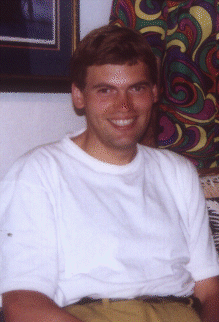
Proposal of Collaboration
on the Development of a New Keratoscope
The device that we are talking about has been patented in Russia. Professor Daniel T. Puryayev is the author and owner of the patent. No information on the proposed device has been published, that ensures the rights of a patent's owner.
The keratoscope was designed at the department "Optical and Electronical Devices for Scientific Research" of Moscow Bauman State Technical University (MBSTU), the leading technical university in Russia.
In our opinion, the device can be quite competitive in the market due to its extremely high performance along with relatively low expenses to produce the most important, original part of the device.
The author's team proposes the following two alternative ways of realization of the device:
-
a) Collaboration and partnership with an interested foreign business
on manufacturing a prototype of the device and further its production for
obtaining a profit out of selling the device for a reduced price; or
b) Selling the patent.
The main advantages of the keratoscope compared to such well-known devices as, for example, the EyeSys-2000 (USA), the TMS-1 (USA) or the PKS-1000 (Japan) are:
-
a) The tolerance of measuring does not principally depend on the
position of a patient's eye with respect to the device's position. That
makes fine-tuning of the device on a patient's eye unnecessary;
b) Because of a considerable distance (more then 60 mm) between a patient's eye and a keratoscope, the device can be used to examine patients with deep eye chambers, immediately in an operation room;
c) The region being measured covers the entire cornea's surface of any diameter;
d) The device enables measuring the cornea of any shape, regardless of existance of strong aspherical or large post-surgical deformations;
e) The device's optical system can be made with mirrors only, without any refractive elements. Therefore, measurement in the invisible part of the light spectrum is possible, making the examination absolutely painless for a patient;
f) Optical elements of the device's original part have simple design and are easy to produce, which ensures the low prime cost;
g) The method of the measurement is positively and fundamentally different from the other known methods, and it can be used also for measuring and testing the shape of aspherical reflecting surfaces of optical elements.
The keratoscope includes:
- optical-mechanical unit (the original part of the device);
- television camera;
- frame memory device;
- computer IBM PC/AT or compatible.
Only the optical-mechanical unit has to be manufactured. The other parts are to be purchased.
Please e-mail your questions and offerings to Sergei Khizhiy -- our former representative in the USA -- at khizhiy@glas.apc.org Your response will be gratefully appreciated.
The author's team.
 Go to the homepage
Go to the homepage